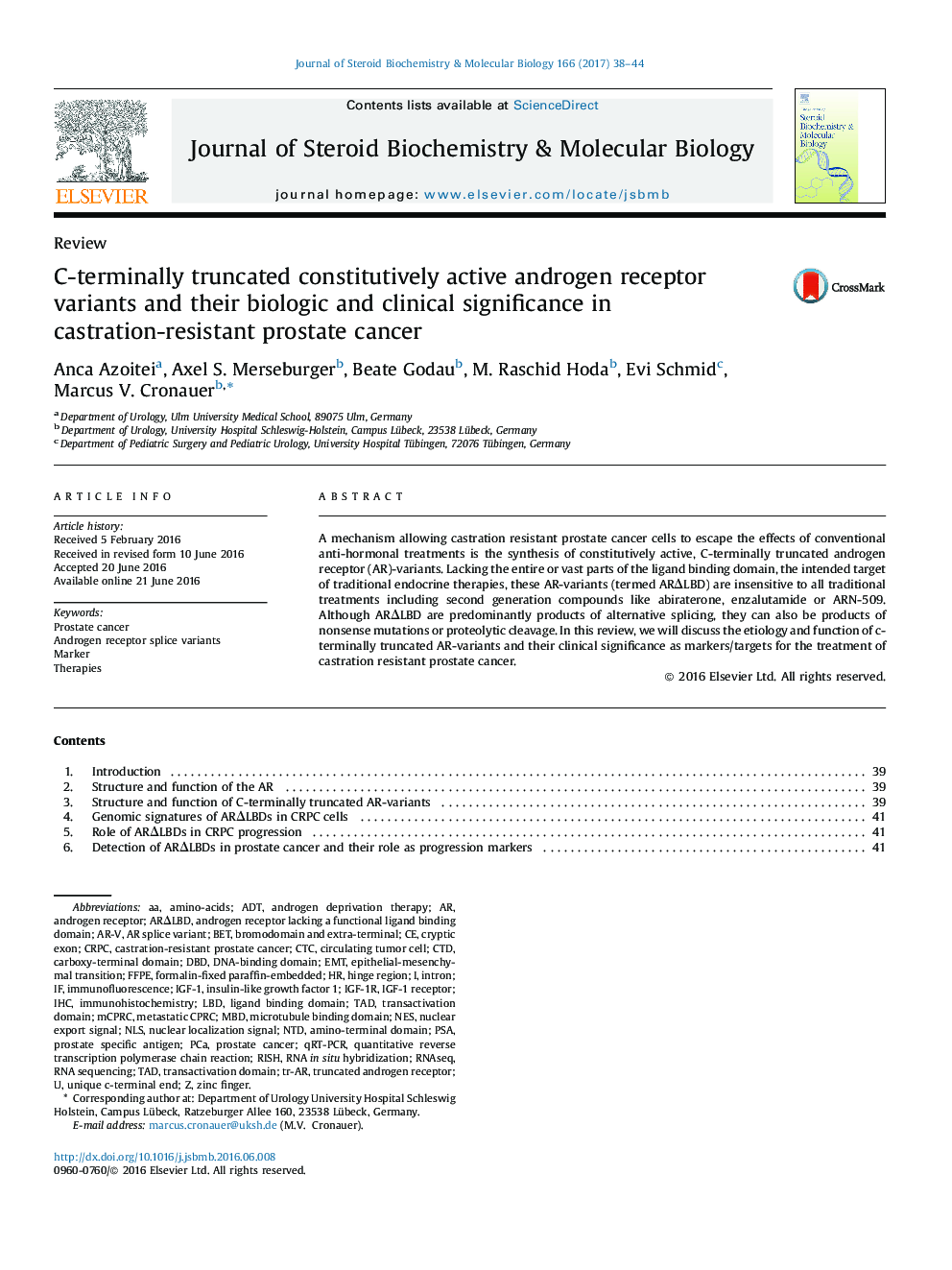| کد مقاله | کد نشریه | سال انتشار | مقاله انگلیسی | نسخه تمام متن |
|---|---|---|---|---|
| 5513178 | 1540981 | 2017 | 7 صفحه PDF | دانلود رایگان |

- ARÎLBDs are products of alternative splicing (AR-V), premature stop codons (Q641X) or enzymatic cleavage (tr-AR).
- ARÎLBDs can be subdivided into two structurally and functionally distinct subgroups, depending on the presence/absence of a hinge region.
- Various ARÎLBDs are involved in PCa progression (castration resistance, EMT, glutaminolysis etc).
- ARÎLBDs like AR-V7 are highly interesting new prognostic and therapeutic targets.
A mechanism allowing castration resistant prostate cancer cells to escape the effects of conventional anti-hormonal treatments is the synthesis of constitutively active, C-terminally truncated androgen receptor (AR)-variants. Lacking the entire or vast parts of the ligand binding domain, the intended target of traditional endocrine therapies, these AR-variants (termed ARÎLBD) are insensitive to all traditional treatments including second generation compounds like abiraterone, enzalutamide or ARN-509. Although ARÎLBD are predominantly products of alternative splicing, they can also be products of nonsense mutations or proteolytic cleavage. In this review, we will discuss the etiology and function of c-terminally truncated AR-variants and their clinical significance as markers/targets for the treatment of castration resistant prostate cancer.
Journal: The Journal of Steroid Biochemistry and Molecular Biology - Volume 166, February 2017, Pages 38-44